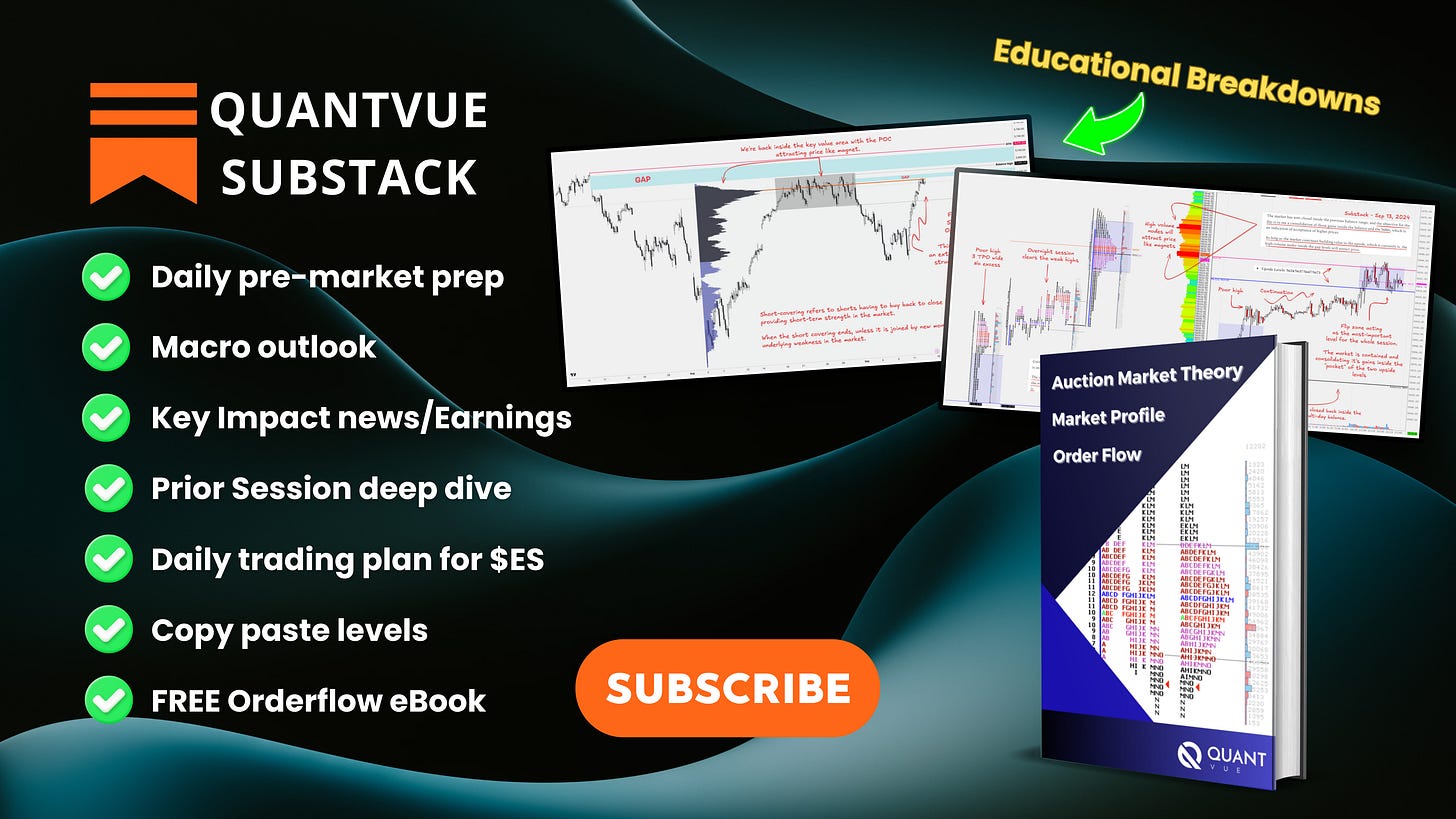Beyond Price
Hey team. The S&P 500 scored record closing highs on Friday, boosted by financial stocks after banks reported strong quarterly results.
Let’s recap last week’s market activity and discuss all the market nuances we analysed and shared with our subscribers.
Impact Snapshot
Retail Sales - Thursday
Unemployment Claims - Thursday
Key Earnings: C 0.00%↑, GS 0.00%↑ , BAC 0.00%↑ , NFLX 0.00%↑, MS 0.00%↑
Macro Viewpoint
The S&P 500 reached record-high closes on Friday, driven by a surge in financial stocks as banks posted strong quarterly earnings.
Additionally, the latest inflation data raised hopes for a potential Federal Reserve interest rate cut in November.
The Q3 earnings season kicked off with better-than-expected results from companies like JPMorgan and Wells Fargo. Investors viewed this positively for upcoming results from other companies.
With the US presidential election just weeks away, investors will be paying attention to corporate leaders discussing economic and trade policy risks and other political matters.
The Labor Department reported that wholesale prices remained unchanged in September, indicating a continued decrease in inflation.
Next week’s earnings calendar includes several major companies, while the economic calendar is expected to have less impact compared to last week.
Why Value Matters
Experienced traders understand and incorporate context into their decision-making and have long stopped believing that price is the market's most important indicator.
We’re sharing these prior session deep dives with our subscribers daily to shed light on what we’re looking at before the market opens, often hours before any 'news' could have come out.
Yet, despite the 'bearish' or 'bullish' sentiment of these news, we still focus on the exact same thing: the charts. The charts tell us what is really going on, as opposed to relying on fundamental data.
Following Thursday’s CPI and unemployment rate data, our comments prior to the US session open were about value and how the market, leading up to that day, had overlapping value to the upside.
Despite the release of these 'bad numbers,' there was no acceptance below value. A great amount of traders on that day were trapped short on that move lower, blindly following price and news headlines.
No matter what you think — like how the CPI numbers were bad, combined with a high unemployment rate that could potentially lead to stagflation — guess what?
Value is not supporting your beliefs and you’re probably gonna lose money if you attempt to mix your long-term investment bias with day-trading.
Very often, new retail traders search for negative headlines to explain why things are bad or why the day turned negative, and they try to pile onto that direction.
We are short-term traders, and we trade based on what the market is communicating through the charts—not on 'negative numbers' or what some fundamentalist said on CNBC this morning.
Our market preparation includes assessing whether the market is trending or balancing, focusing on where value is being built, identifying any upcoming catalysts that could affect the perception of that value, determining whether the overnight is long or short, thus anticipating potential corrections, and much more.
If you want to receive our daily market insights, which focus on market-generated information and gain a better understanding of the market environment and our key references, consider Subscribing.


